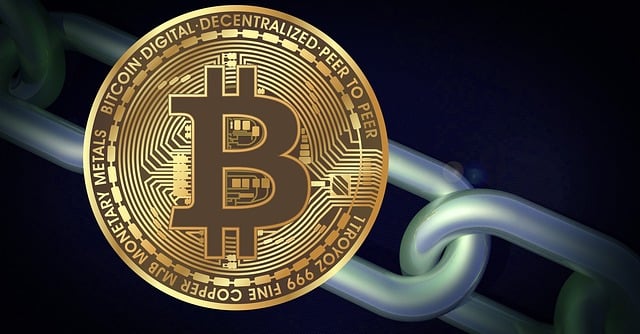Bitcoin's inception as a decentralized digital currency prompted significant advancements in blockchain technology, particularly in mining methods. Early miners used general-purpose computers, but increasing network complexity led to the development of Application-Specific Integrated Circuits (ASICs) for specialized Bitcoin mining. ASICs offered immense performance advantages, optimizing complex mathematical problems with unparalleled speed and energy efficiency. This evolution transformed Bitcoin mining into a competitive landscape dominated by specialized farms. As Bitcoin continues to grow, innovations in ASIC technology remain crucial, driving profitability while raising environmental concerns due to high energy consumption. The future of Bitcoin mining is shifting towards off-chain technologies, decentralized approaches, and sustainable practices to address scalability and energy issues.
Bitcoin, the pioneering cryptocurrency, has sparked a revolution in digital finance. As its popularity soared, efficient mining became paramount, driving the evolution of specialized hardware. This article explores the transformative journey from the early days of Bitcoin mining to the cutting-edge technologies shaping its future. We delve into the rise of ASICs (Application-Specific Integrated Circuits), their impact on speed and energy efficiency, and the emerging alternatives challenging traditional mining methods. Additionally, we discuss environmental implications and sustainable practices in the ever-evolving world of Bitcoin.
- The Rise of Bitcoin and the Need for Efficient Mining
- Understanding ASICs: Specialized Hardware for Bitcoin Mining
- Early Days: The Impact of ASICs on Mining Speed and Energy Consumption
- Evolution of ASIC Technology: From 1st Generation to Latest Advancements
- Alternative Mining Methods: GPU, FPGA, and Cloud Mining Challenges
- The Future of Bitcoin Mining: Off-Chain Solutions and Decentralization
- Environmental Concerns and Sustainable Mining Practices
The Rise of Bitcoin and the Need for Efficient Mining

The rise of Bitcoin, as a decentralized digital currency, revolutionized the way we perceive and utilize money. It sparked an unprecedented interest in blockchain technology and cryptocurrency mining. As more people joined the network, the demand for efficient and secure transactions grew exponentially. This led to a critical need for advanced mining techniques to verify these transactions and maintain the integrity of the Bitcoin network.
The early days of Bitcoin mining were characterized by the use of general-purpose computers, which quickly became inefficient as the network’s complexity increased. This prompted miners to explore more specialized hardware, leading to the eventual dominance of Application-Specific Integrated Circuits (ASICs). ASICs, designed specifically for Bitcoin mining, offered a significant performance advantage over conventional processors, making them essential in the highly competitive and constantly evolving landscape of Bitcoin mining.
Understanding ASICs: Specialized Hardware for Bitcoin Mining

Bitcoin mining has evolved significantly since its early days, driven by advancements in technology and increasing computational demands. At the forefront of this evolution are Application-Specific Integrated Circuits (ASICs), specialized hardware designed exclusively for Bitcoin mining. These circuits optimize the complex mathematical problems required to validate transactions on the Bitcoin blockchain, making them vastly more efficient than general-purpose CPUs or GPUs.
ASICs offer unparalleled processing power and energy efficiency, enabling miners to solve these intricate puzzles faster. This specialization has led to a dramatic increase in mining profitability while also fostering a competitive landscape where specialized farms dominate. As Bitcoin continues to grow, innovations in ASIC technology will remain crucial in shaping the future of decentralized digital currency.
Early Days: The Impact of ASICs on Mining Speed and Energy Consumption

In the early days of Bitcoin, mining was a relatively simple endeavor, dominated by individuals using their personal computers (GPUs) to solve complex mathematical problems. However, as the network’s security and complexity grew, so did the need for more efficient mining solutions. This is where Application-Specific Integrated Circuits (ASICs) stepped in, revolutionizing the Bitcoin mining landscape.
ASICs, designed specifically for cryptocurrency mining, marked a significant turning point in Bitcoin’s evolution. These specialized hardware devices offered a dramatic increase in mining speed, processing millions of calculations per second. Consequently, they also reduced energy consumption by optimizing the process, allowing miners to solve blocks more efficiently. This shift empowered individuals and small mining operations to compete with larger, industrial-scale mines, fostering a more decentralized network.
Evolution of ASIC Technology: From 1st Generation to Latest Advancements

The evolution of ASIC technology has been a pivotal aspect of Bitcoin mining’s journey, marking significant advancements in efficiency and performance. The story begins with the introduction of Application-Specific Integrated Circuits (ASICs) designed specifically for Bitcoin mining during its early days. These initial ASICs represented a paradigm shift from general-purpose CPUs and GPUs, offering unparalleled processing power dedicated solely to solving complex cryptographic puzzles.
As the Bitcoin network grew, so did the complexity of mining. This prompted further innovations in ASIC technology, leading to each subsequent generation boasting improved performance and energy efficiency. The latest advancements incorporate more advanced silicon designs, enhanced cooling mechanisms, and optimized algorithms, enabling miners to solve millions of calculations per second. These improvements have not only increased Bitcoin’s security but also driven down the cost of mining operations, making it a thriving industry within the cryptocurrency ecosystem.
Alternative Mining Methods: GPU, FPGA, and Cloud Mining Challenges

Bitcoin mining has traditionally dominated the landscape, with specialized Application-Specific Integrated Circuits (ASICs) being the go-to choice for their immense computational power and efficiency. However, as the Bitcoin network continues to evolve, alternative mining methods are gaining traction. Graphics Processing Units (GPUs), Field-Programmable Gate Arrays (FPGAs), and cloud mining represent significant deviations from the ASIC-centric approach.
Each of these methods comes with its own set of challenges. GPUs, initially designed for rendering graphics, offer parallel processing capabilities that make them faster alternatives for Bitcoin mining. FPGAs, on the other hand, provide flexibility by allowing users to customize hardware designs for specific tasks, though they may require more technical expertise. Cloud mining further democratizes access to mining operations by enabling individuals to participate without owning specialized equipment, but it introduces concerns related to centralized control and security.
The Future of Bitcoin Mining: Off-Chain Solutions and Decentralization

The future of Bitcoin mining looks beyond the traditional on-chain solutions, with a growing focus on off-chain technologies and decentralized approaches. As the network matures, there’s a push to address some of the energy consumption and scalability challenges associated with ASICs (Application-Specific Integrated Circuits). Innovations like layer-2 scaling solutions, such as Lightning Network, aim to process transactions off the main blockchain, reducing congestion and enhancing efficiency.
Decentralized finance (DeFi) and non-fungible tokens (NFTs) are driving demand for faster, cheaper, and more secure transactions, pushing miners to explore alternative methods. Off-chain solutions offer promising avenues, allowing for quicker confirmation times and reduced energy costs. This evolution could lead to a more decentralized Bitcoin ecosystem, where users have more control over their funds and the network’s security is distributed across various participants.
Environmental Concerns and Sustainable Mining Practices

Bitcoin mining, an essential process that underpins the cryptocurrency’s network, has faced increasing scrutiny due to its environmental impact. The energy-intensive nature of traditional mining methods, heavily reliant on Graphics Processing Units (GPUs) and Central Processing Units (CPUs), has sparked concerns about the carbon footprint. As Bitcoin’s popularity surges, so does the demand for more efficient mining solutions that balance performance with sustainability.
The introduction of Application-Specific Integrated Circuits (ASICs) revolutionized Bitcoin mining by offering unparalleled computational power in specialized hardware. While ASICs significantly enhanced mining efficiency, they also contributed to the energy crisis. Miners have since explored alternative practices like renewable energy adoption, heat recovery systems, and efficient cooling methods to mitigate environmental concerns. The push for sustainable mining underscores the evolving relationship between Bitcoin and ecological responsibility.
As we’ve explored, Bitcoin mining has evolved significantly since its inception. The introduction of ASICs revolutionized mining speed and energy efficiency, but with environmental concerns on the rise, the industry must balance progress with sustainability. Future developments in off-chain solutions and decentralized mining practices offer promising paths forward, aiming to make Bitcoin mining more accessible, efficient, and eco-friendly. This ongoing evolution underscores the dynamic nature of the bitcoin ecosystem as it seeks to adapt to changing technological and environmental landscapes.
